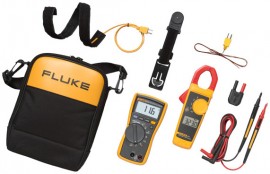Larry Vrooman
Pre-takeoff checklist
- Joined
- Jan 30, 2020
- Messages
- 158
- Display Name
Display name:
N5168T
The annual on my Citabria, completed as part of the sale was just shy of $2200, including some discrepancies I found in my pre-buy inspection of it. The annual was done out of state about 2.5 flight hours away - too far for my local mechanic, and took almost three weeks. When I finally took possession of the airplane I noted some things that would not pass muster with most good mechanics, such as:
1) Removed, cleaned, reinstalled and re-routed the throttle cable to address a sticky throttle cable issue - but did not use fireseal on in the hole in the firewall the throttle cable passed through. Right behind that hole is the header tank for the inverted fuel system. I also noted missing grommets around wires and again a lack of fireseal.
2) Multiple instances of wires cable tied to the engine mount with no protective tape underneath them. Add a little grit and several hundred hours of vibration and you'll have a log entries for "removed engine mount", "installed re-built engine mount".
3) The compression test was done after warming the engine at idle, not immediately after flying it for 45 minutes or so to bring it fully up to operating temperature.
4) Both clips connecting the tailwheel springs to the control arm were faulty - one was badly bent and the other was broken.
5) The right brake felt like something was bending, before and then again after the annual. About 3 flight hours after the annual, the clevis connecting the brake extension rod to the master cylinder snapped. Upon removing the two machine screws holding the boot cowl together on the bottom, it was obvious:
- no one had looked up in there for years, given the dust, dirt, etc and accumulated grease and oil that indicated the two halves of the boot cowl had not been separated for a long time); and
- the clevis had obviously been bent for a long time, flexing each time the brake was applied, until repeated bending led to metal fatigue and failure. This was 3 flight hours after an annual inspection where a very easy to open access panel wasn't, with the result that the brake linkage was not examined, even though the difference in brake feel indicated something was not right.
It could have just been a "off" few weeks, but I suspect that's a pretty average annual for that AP/IA.
----
So...I'm a big believer in annual inspections. But I am also a big believer in owner assisted maintenance. The owner learns a lot about their airplane and maintenance in general, and the owner is assured the required inspection checklist and subsequent maintenance is actually done.
1) Removed, cleaned, reinstalled and re-routed the throttle cable to address a sticky throttle cable issue - but did not use fireseal on in the hole in the firewall the throttle cable passed through. Right behind that hole is the header tank for the inverted fuel system. I also noted missing grommets around wires and again a lack of fireseal.
2) Multiple instances of wires cable tied to the engine mount with no protective tape underneath them. Add a little grit and several hundred hours of vibration and you'll have a log entries for "removed engine mount", "installed re-built engine mount".
3) The compression test was done after warming the engine at idle, not immediately after flying it for 45 minutes or so to bring it fully up to operating temperature.
4) Both clips connecting the tailwheel springs to the control arm were faulty - one was badly bent and the other was broken.
5) The right brake felt like something was bending, before and then again after the annual. About 3 flight hours after the annual, the clevis connecting the brake extension rod to the master cylinder snapped. Upon removing the two machine screws holding the boot cowl together on the bottom, it was obvious:
- no one had looked up in there for years, given the dust, dirt, etc and accumulated grease and oil that indicated the two halves of the boot cowl had not been separated for a long time); and
- the clevis had obviously been bent for a long time, flexing each time the brake was applied, until repeated bending led to metal fatigue and failure. This was 3 flight hours after an annual inspection where a very easy to open access panel wasn't, with the result that the brake linkage was not examined, even though the difference in brake feel indicated something was not right.
It could have just been a "off" few weeks, but I suspect that's a pretty average annual for that AP/IA.
----
So...I'm a big believer in annual inspections. But I am also a big believer in owner assisted maintenance. The owner learns a lot about their airplane and maintenance in general, and the owner is assured the required inspection checklist and subsequent maintenance is actually done.


